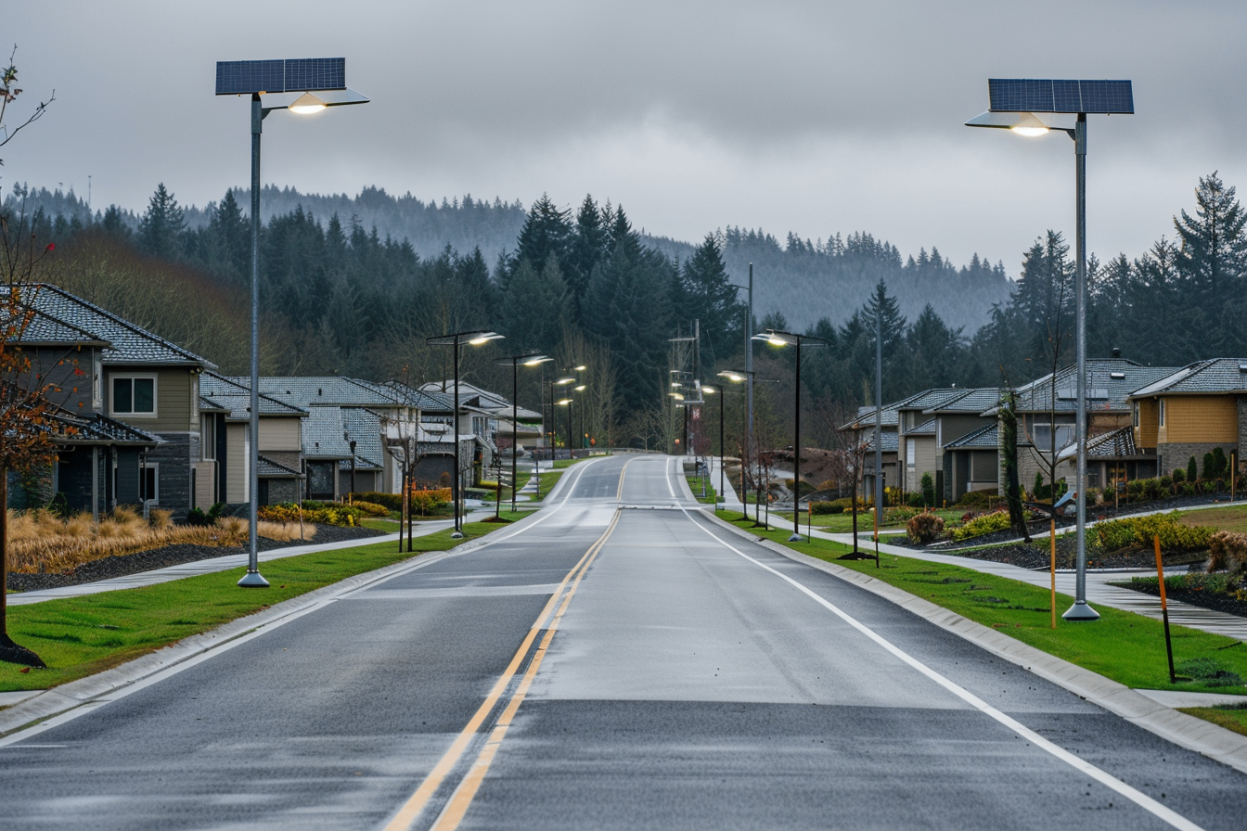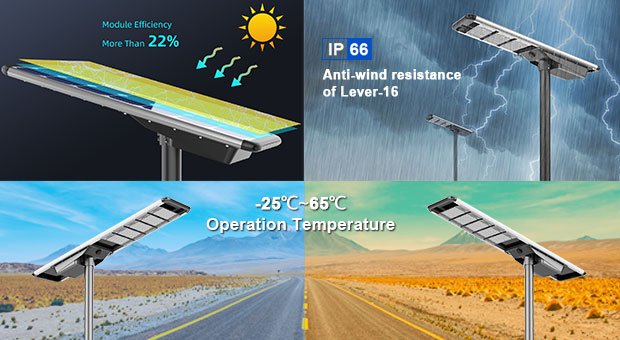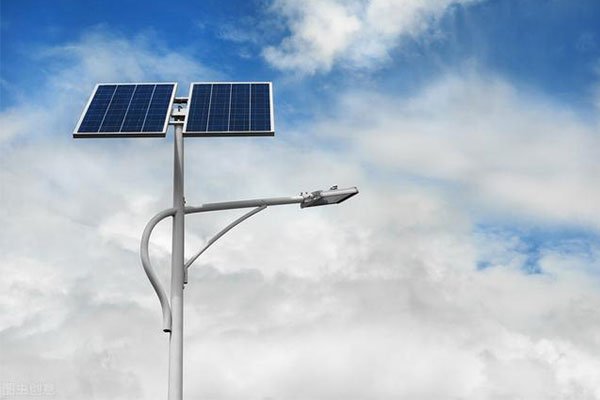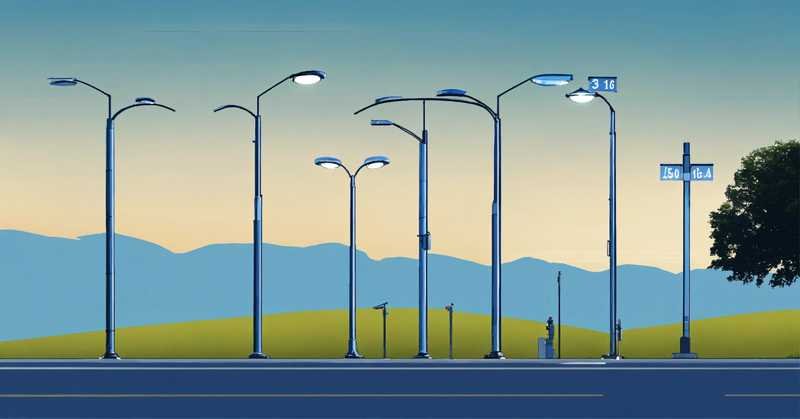Many remote areas face significant safety challenges due to weak infrastructure. The lack of adequate public lighting contributes to higher accident rates, slow emergency response, and increased crime. Smart solar street lights offer a sustainable and cost-effective solution.
Rural villages, mountain regions, and islands often suffer from insufficient lighting, leading to:
- Low nighttime visibility – Increases the risk of accidents.
- Limited emergency response – Delays in rescue and medical assistance.
- Higher crime rates – Poor lighting and lack of surveillance encourage theft and vandalism.
- Weak infrastructure – Poorly maintained roads and bridges pose additional risks.
To improve public safety in these areas, reliable and cost-effective lighting solutions are urgently needed.
How Smart Solar Street Lights Enhance Safety in Remote Areas
1. Reliable Illumination for Better Nighttime Visibility
High-lumen LED lighting significantly improves visibility for both pedestrians and drivers, reducing accidents and creating a safer environment.

Benefits of High-Quality Illumination
- Reduces accident rates – Well-lit roads prevent collisions and improve traffic safety.
- Enhances public confidence – People feel safer walking or commuting at night.
- Supports nighttime economic activities – Encourages businesses to operate after dark.
💡 Case Study: In India, the installation of LED solar street lights in rural areas resulted in a 30% reduction in road accidents at night.
2. Off-Grid Operation: Perfect for Electrically Underserved Regions
Smart solar street lights operate independently, making them ideal for remote locations without reliable electricity access.
Why Off-Grid Solar Lighting is Essential
- 100% solar-powered – No need for connection to municipal electricity grids.
- Suitable for rural areas, mountains, and islands – Can be deployed anywhere.
- Resilient during natural disasters – Functions even when the main power grid is down.
💡 Example: In the Philippines, off-grid solar street lights continued operating during typhoons, providing crucial lighting for emergency responders.
3. Smart Motion Sensors: Preventing Crime
Built-in motion sensors detect movement and automatically increase brightness, deterring suspicious activity.

How Motion Sensors Reduce Crime
- Instant brightness increases when motion is detected, discouraging criminals.
- Prevents vandalism and theft – Sudden light activation alerts bystanders and law enforcement.
- Proven effectiveness – Studies show enhanced street lighting can reduce crime rates by 20%.
💡 Real-World Impact: Several African cities that installed motion-sensitive solar street lights reported fewer theft and vandalism cases in poorly lit neighborhoods.
4. Remote Monitoring for Efficient Management
IoT-enabled smart street lights allow remote monitoring and control, ensuring optimal performance and efficient energy use.
Advantages of Remote Management
- Real-time brightness adjustments – Optimize energy consumption.
- Automatic fault detection – Immediate alerts for maintenance issues.
- Data collection & analytics – Helps city planners optimize lighting placement.
💡 Example: In Mexico City, smart solar street lights equipped with IoT sensors reduced maintenance costs by 40%, as failures were detected remotely before causing outages.
Economic & Environmental Benefits
1. Cost Savings for Municipalities
LED solar street lights consume 60% less energy than traditional streetlights, significantly lowering electricity expenses and maintenance costs.
Financial Benefits
- Lower energy costs – Reduces municipal electricity expenses.
- Longer lifespan – LEDs last 4x longer than traditional bulbs.
- Minimal maintenance – Fewer replacements and repairs needed.
💡 Case Study: In Quezon City, Philippines, LED solar lighting cut municipal lighting expenses by 65%, freeing funds for education and healthcare.
2. Environmental Sustainability
Smart solar street lights reduce carbon emissions, helping cities achieve sustainability goals.

Green Benefits
- No reliance on fossil fuels – Reduces dependency on coal and diesel.
- Significant CO₂ reduction – Helps meet global climate targets.
- Sustainable urban development – Aligns with smart city initiatives.
💡 Impact: A full-scale transition to solar-powered street lights in the U.S. could cut emissions equivalent to removing 5 million cars from the road annually.
Success Stories: Smart Solar Street Lights in Action
1. Developing Nations: Improving Infrastructure & Safety
Solar street lights have transformed rural communities by increasing safety and enhancing infrastructure.

Key Impacts:
✅ Improved nighttime visibility – Reducing accidents and crime.
✅ Faster emergency response – Street lighting enhances navigation for ambulances and law enforcement.
✅ Stronger local economies – Businesses remain open longer, supporting economic growth.
💡 Example: In Kenya, solar street lighting projects have improved nighttime safety, reducing crime rates by 35% in illuminated areas.
2. Urban Applications: Building Sustainable Smart Cities
Countries like Canada and Mexico have successfully implemented smart solar street lights to enhance safety while reducing municipal expenses.
Case Studies:
- Canada & Mexico – Deployed IoT-connected solar lighting to cut crime and energy costs.
- UK (PPP Model) – Combined road, bridge, and lighting upgrades in a single Public-Private Partnership (PPP) to maximize investment efficiency.
💡 Example: In Birmingham, UK, integrating solar street lighting with smart infrastructure reduced public lighting costs by 45% while enhancing urban security.
Conclusion: The Future of Smart Solar Street Lights
🌍 Smart solar street lights provide an economic, environmentally friendly, and efficient public lighting solution.
🚦 By integrating smart technology, they enhance security, reduce crime, and improve quality of life.
🏙️ Municipal leaders and governments should prioritize these sustainable lighting projects to create safer and smarter cities.
With continued investment and technological advancements, smart solar street lights will become a key component of future urban and rural development.







